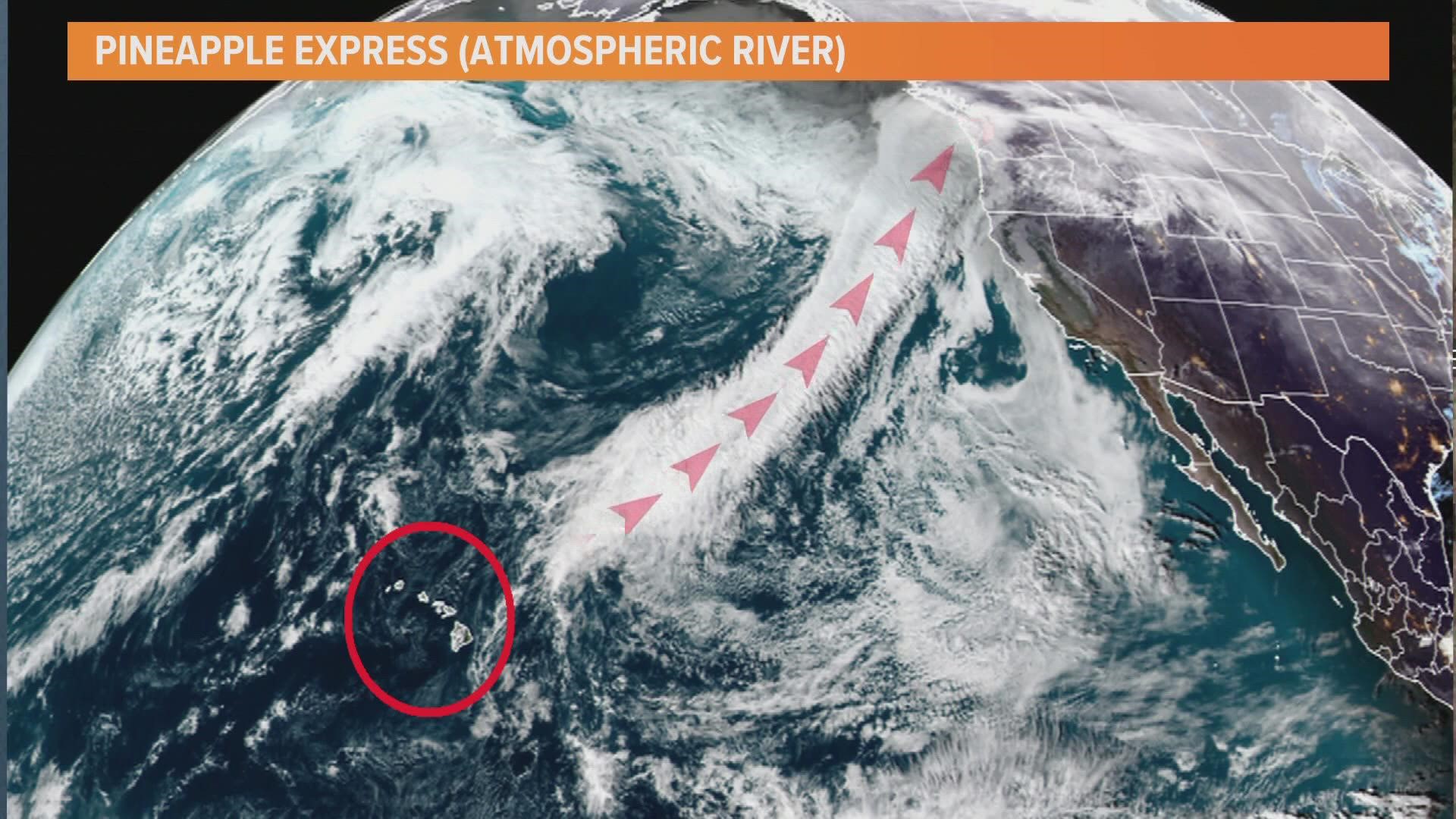MOLINE, Ill. — Over the past couple of days, the west coast has been experiencing a lot of rain as a result of one of the many atmospheric rivers that have been dumping precipitation across the area.
An atmospheric river is a narrow band of air in the atmosphere that transports water vapor from the tropics onto the mainland. They pick up warm, moist air from tropical regions, hold onto the water vapor and then, once they are over land where it is cooler, release the water in the form of rain or snow.
Winds play a part in atmospheric rivers; the stronger the winds over the ocean atmosphere, the more moisture can be transported.
As the name suggests, they are like rivers in the air. They can transport as much water as the average flow of water at the mouth of the Mississippi River. They are about 250 to 375 miles long and mainly occur in the winter.
Most atmospheric rivers are beneficial to the west coast, providing annual rain or snow that can be collected in lakes and rivers and an increase in snowpacks.
However, some can cause hazards such as flooding and mudslides. This can occur when they release more precipitation than normal, stall and continue to rain for days at a time, or when three atmospheric rivers have hit the west coast since the end of December.
One well-known atmospheric river, called the Pineapple Express, collects warm, moist air from Hawaii and can release up to 5 inches of rain along the west coast.
Watch more news, weather and sports on News 8's YouTube channel

